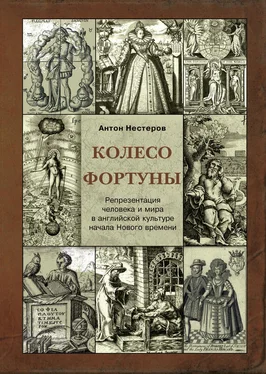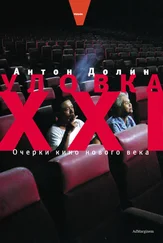Praz Mario. Studies in Seventeenth Century Imagery. Roma, 1975; Schone A. Emblematic und Drama im Zeitaler des Barock. Miinchen, 1964.
Russel Daniel S. Perceiving, seeing and meaning: emblems and some approaches to reading early modern culture/ Aspects of Renaissance and Baroque Symbol Theory 1500–1700. Ed. by Peter M. Daly and John Manning. New York, 1999. P. 79–80.
Eadwi Gospels, Canon Table, fol. 9v Hanover, Kestner-Museum. Воспроизведено в: Klibansky R, Panofsky E., Saxl F. Saturn and Melancholia. London, 1964. 111. 105.
MS Cotton. Tib. С VI, fol. 7v Воспроизведено в Klibansky R, Panofsky E., Saxl F. Saturn and Melancholia. London, 1964. 111. 106.
Friedman John Block. The architect's compass in creation miniatures of the latter middle ages/ Traditio. Studies in ancient and medieval history, thought and religion. Vol. XXX, 1974. P. 419–420.
Bible Moralisee. MS. 1779, fol. Iv Vienna, Oesterrichishe Nationalbibliotek. Воспроизведено: Roob Alexander. The Hermetic Museum, alchemy & Mystiscism. Koln, London, New York: Tashen, 1997. P. 631.
Две другии части находятся в: Парижской национальной библиотеке (222 листа) и Британской библиотеке (178 листов).
Holcam Bible. British Museum Add. 47682 fol. 2. Воспроизведено: Friedman John Block. The architect's compass in creation miniatures of the latter middle ages/ Traditio. Studies in ancient and medieval history, thought and religion. Vol. XXX, 1974. Fig. VIII, plates between pages 426–427.
Frideman. Op. cit. P. 420.
Привлекая разнородный по времени своего создания материал для уточнения иконографии, мы исходим из того, что более поздние стадии бытования какого-либо образа, его изводы, являясь иным по отношению к первичному изображению (или тексту), позволяют уяснить некоторые особенности образного ядра, присущие ему изначально. Иначе говоря: более поздние слои образной системы можно, с крайне высокой долей осторожности, рассматривать как комментарии к ее более ранним стадиям и состояниям. Если бы дело обстояло иначе, мы имели дело не с изводом (то есть модификацией или перетолкованием образа), а – с иным образом. Взаимодействие символического и смыслового ядра с новыми культурными полями вскрывает потенции, имплицитно присущие этому ядру, но до того эксплицитно не проявленные. Тут можно провести сравнение с современной экспериментальной физикой, когда взаимодействие элементарных частиц в специально смоделированных условиях позволяет по специфическим следствиям, присущим таким взаимодействиям, судить о параметрах частиц до взаимодействия – то есть следствие уточняет причину.
Minerva Britanna, 1612 by Henry Peacham. Imprint. Leeds: Scolar Press, 1966. P. 184.
Lynn White Jr. The Iconography of Temperantia and the Virtiousness of Technology/ Rabb TK, Jerrold E. Siegel, eds. Action and convinction in Early Modern Europe. Princeton, 1969. R 207–208.
Klibansky R, Panofsky E., Saxl F. Saturn and Melancholia. London, 1964.
Rollenhagius, Gabriel. Emblematum centuria secunda. Arenheim, 1613.
Wither, George. A collection of Emblemes, Ancient and Moderne, Quickened with metricall illustrations, both Morall and divine. London, 1635.
Alpers Svetlana. On the Emblematic Interpretation of Dutch Art / Alpers Svetlana. The Art of Describing. Chicago, 1983. P. 229–233; Rees R. Tohn Constable and the Art of Geography/ Geographical Review. Vol. 66, # 1 (January 1976). P. 59–72; Rees R. Historical Links between Cartography and Art/ Geographical Review, Vol. 70, No. 1 (Jan., 1980). P. 60–78
Fiorany F. The Marvel of Maps: Art, Cartography, and Politics in Renaissance Italy. Yale, 2005.
Consgrove D. Apollo's eye: A cultural geography of the Globe. Hettner Lecture I. June 2005. (URL: http://www.sscnet.ucla.edU/geog/downloads/418Z45.pdf Обращение 20.12.2013).
Harley J. B. Historical geography and the cartographic illusion/ Journal of Historical Geography. № 15, 1989. P. 80–91; Harley J. B. Maps, knowledge, and power/ Congrave D, Daniels S. (Editors). The iconography of Landscape. Essays on the symbolic representation, design and use of past environments. Edited by D. Cosgrove and Stephen Daniels. Cambridge, New York, 1989.
Woodward David. Cartography and the Renaissance: Continuity and Change/ Woodward David (Ed.) The History of Cartography. Vol. III. Cartography in the European Renaissance. Part I. Chicago, London, 2007. P. 3–24.
Harley JB. Silence and secrecy: The hidden agenda of cartography in early modern Europe/ Imago Mundi. Vol. 40 (1988). P. 57–76.
Crampton J. W. Maps as social constructions: power, communication and visualization/ Progress in Human Geography # 25, part 2. 2001. P. 235–252.
Pickles J. Texts, Hermeneutics and Propaganda Map/ The Map Reader: Theories of Mapping Practice and Cartographic Representation. Edited by Martin Dodge, Rob Kitchin. Willey – Blackwell, 2004. P. 400–406.
Wintle M. Renaissance maps and the construction of the idea of Europe/ Journal of Hstorical Geography, # 25, part 2 (1999). P. 147–159.
Dee John. Preface to Euclid/ The Works of John Dee. Modernisation of his mathematical masterpieces. Newport, 2010. P. 181.
Alpers Svetlana. The Mapping Impulse in Dutch Art/ Alpers Svetlana. The Art of Describing. Chicago,1983. P. 134.
Dee John. Monas Hieroglyphic a/ The Works of John Dee. Modernisation of his mathematical masterpieces. Newport, 2010. P. 51–122.
Собственно, они отчасти и стали осуществлением «Антропографии» Джона Ди – в первую очередь это относится к «Utriusque cosmi metaphysica, physica atque technica historia» (1617) и «De naturali, supernaturali, praeternaturali et contranaturali microcosmi historia» (1619–1621) Роберта Фладда.
Читать дальше
Конец ознакомительного отрывка
Купить книгу


![Брайен Фрил - Колесо фортуны [=Кристал и Фокс]](/books/93033/brajen-fril-koleso-fortuny-kristal-i-foks-thumb.webp)






